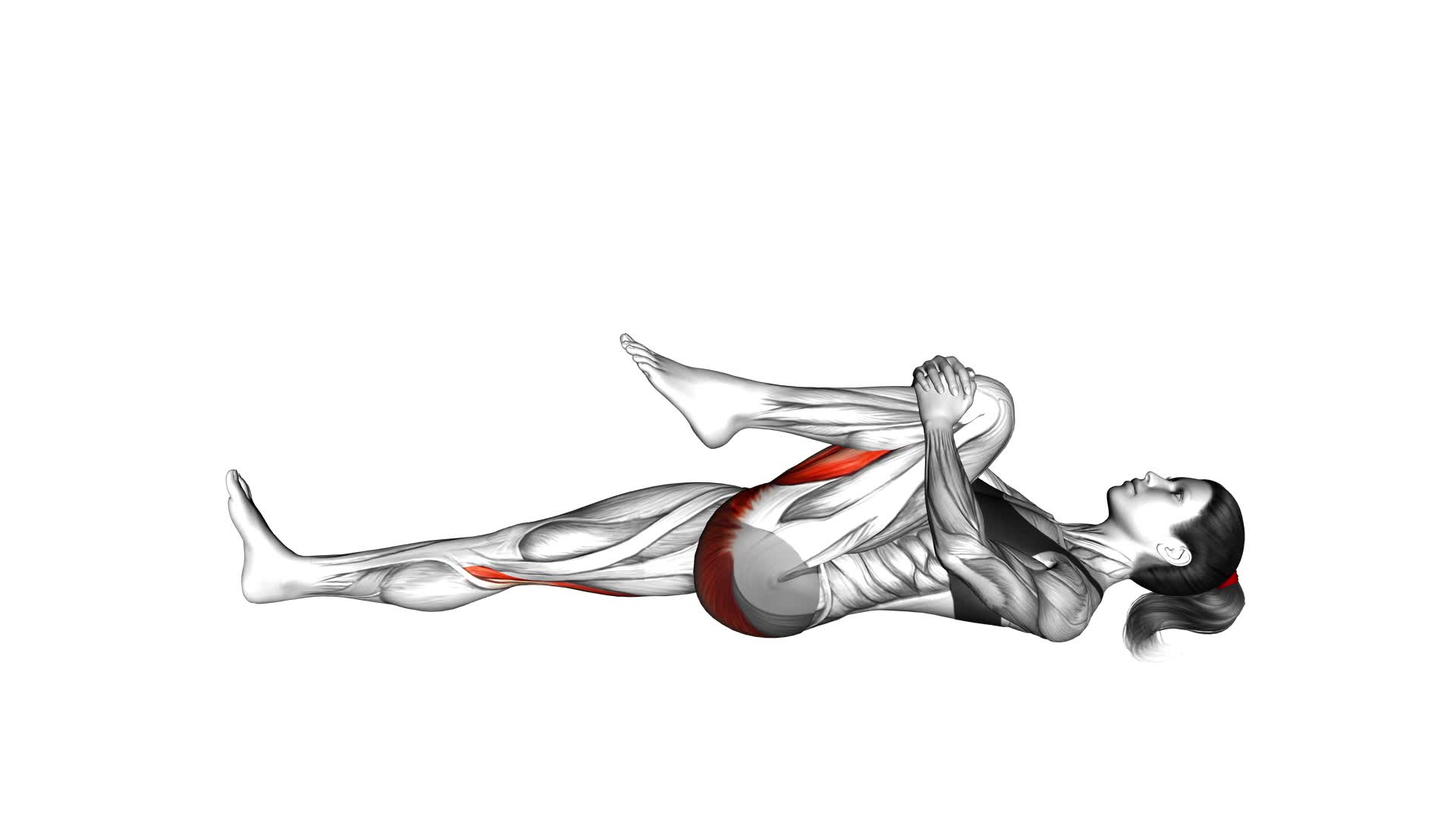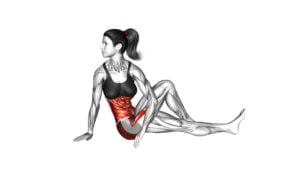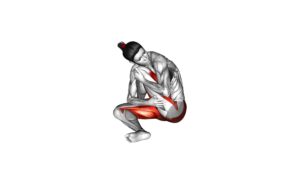Knee to Chest Stretch (Female) – Video Exercise Guide & Tips

Are you looking for a simple and effective stretch to relieve tension in your lower back and hips? Look no further than the knee to chest stretch!
Watch This Exercise Video
This video exercise guide will show you the proper technique and variations for this stretch, along with precautions and modifications.
Get the most out of your stretching routine with these helpful tips. Start incorporating the knee to chest stretch into your fitness routine today!
Key Takeaways
- Increased flexibility
- Improved lower back strength
- Targets muscles in the lower back, hips, glutes, and hamstrings
- Alleviates tightness
Benefits of the Knee to Chest Stretch
The knee to chest stretch offers numerous benefits for women, including increased flexibility and improved lower back strength. When performed with proper form techniques, this stretch can effectively target the muscles in the lower back, hips, glutes, and hamstrings. By bringing one knee towards your chest and holding it there, you can lengthen and stretch these muscles, which can help alleviate tightness and improve overall mobility.
To ensure proper form during the knee to chest stretch, start by lying on your back with both legs straight. Slowly bend one knee and bring it up towards your chest, using your hands to gently pull the knee closer if needed. Keep your other leg straight and your lower back pressed into the floor. Hold the stretch for 20-30 seconds, while focusing on your breathing. Inhale deeply as you bring your knee towards your chest, and exhale slowly as you release the stretch.
Breathing during the knee to chest stretch is important for maximizing its benefits. Deep diaphragmatic breathing helps to relax the muscles and increase blood flow, allowing for a greater stretch and improved flexibility. Remember to breathe deeply and consciously throughout the stretch, inhaling and exhaling slowly and steadily.
Incorporating the knee to chest stretch into your regular exercise routine can help improve flexibility, strengthen the lower back, and prevent muscle imbalances. By practicing proper form techniques and focusing on your breathing, you can make the most of this stretch and reap its many benefits.
Proper Technique for the Knee to Chest Stretch
To perform the knee to chest stretch correctly, you should lie on your back with both legs straight and slowly bend one knee towards your chest. This exercise helps to stretch your lower back, hips, and glutes.
Maintaining proper form is crucial to avoid injury and maximize the benefits of this stretch. As you bring your knee towards your chest, keep your other leg straight and relaxed on the ground. Gently pull your knee closer to your chest using your hands, until you feel a comfortable stretch in your lower back and glutes.
Remember to breathe deeply and slowly throughout the stretch, as proper breathing techniques can enhance the effectiveness of the exercise. Exhale as you pull your knee towards your chest, and inhale as you release the stretch and return your leg to the starting position.
Repeat the stretch on both legs, aiming for three to five repetitions on each side. By maintaining proper form and incorporating proper breathing techniques, you can optimize the benefits of the knee to chest stretch.
Variations of the Knee to Chest Stretch
How can you modify the knee to chest stretch to increase its intensity?
There are several variations of the knee to chest stretch that can help you maximize its benefits and challenge your muscles in different ways.
One modification is to perform the stretch with your legs straight instead of bent. This variation increases the stretch in your hamstrings and lower back, providing a deeper stretch.
Another modification is to add a twist to the stretch by bringing your knee across your body towards the opposite shoulder. This twist engages your oblique muscles and adds an element of core strengthening to the stretch.
Additionally, you can use a resistance band or strap to increase the intensity of the stretch. By placing the band around your foot and holding both ends, you can gently pull your leg towards your chest, creating a deeper stretch in your hip flexors and quadriceps.
These modifications not only increase the intensity of the knee to chest stretch, but also target different muscle groups, providing you with a more comprehensive and effective stretching routine.
Precautions and Modifications for the Knee to Chest Stretch
To safely and effectively modify the knee to chest stretch, frequently incorporate variations that challenge your muscles in different ways. However, it's important to take certain precautions and make modifications to ensure that you perform the exercise correctly and avoid any potential risks or injuries.
First and foremost, listen to your body and only go as far as you feel comfortable. Avoid any excessive pulling or jerking motions that could strain your muscles. If you have any existing knee or back injuries, it's crucial to consult with a healthcare professional before attempting this stretch, as it may not be suitable for you.
To modify the knee to chest stretch, you can use props such as a strap or towel to assist you in bringing your knee closer to your chest. This can help if you have limited flexibility or if you find it difficult to reach your knee with your hands. Additionally, you can perform the stretch while lying on your back to alleviate any pressure on your spine.
Remember to breathe deeply and relax throughout the stretch to enhance its effectiveness. By taking these precautions and making the necessary modifications, you can safely and effectively perform the knee to chest stretch.
Transition: Now that you're aware of the precautions and modifications, let's move on to some tips for getting the most out of the knee to chest stretch.
Tips for Getting the Most Out of the Knee to Chest Stretch
To get the most out of the knee to chest stretch, it's important to focus on proper form techniques. Make sure to keep your back flat on the ground and avoid lifting your head or shoulders.
Additionally, remember to breathe deeply and relax into the stretch, holding it for about 20-30 seconds on each side.
Proper Form Techniques
To get the most out of the knee to chest stretch, position yourself on your back with both knees bent and your feet flat on the floor. This proper form technique will ensure that you're in the correct starting position for the stretch.
Here are some tips to help you maximize the benefits of this exercise:
- Common mistakes to avoid:
- Avoid pulling your knee too forcefully towards your chest, as this can strain your lower back.
- Don't hold your breath during the stretch. Remember to breathe deeply and relax.
- Avoid lifting your head or shoulders off the floor. Keep them relaxed and grounded.
- Equipment needed:
- No equipment is needed for the knee to chest stretch. It can be done anywhere, anytime.
- Tips for proper form:
- Start by bringing one knee towards your chest, holding it with both hands for 20-30 seconds.
- Keep your opposite leg relaxed and straight on the floor.
- Repeat on the other side, alternating between legs for a total of 2-3 sets.
Breathing During Stretch
Maximize the benefits of the knee to chest stretch by focusing on your breathing technique. Proper breathing during this stretch can enhance the stretching benefits and help you achieve a deeper and more effective stretch.
When performing the knee to chest stretch, inhale deeply as you bring your knee towards your chest, feeling the stretch in your hip and lower back. As you exhale, gently release the stretch and lower your leg back to the starting position. By coordinating your breath with the movement, you can promote relaxation and increase the flexibility of your muscles.
Remember to breathe deeply and evenly throughout the stretch to fully engage your diaphragm and enhance the overall stretching experience.
Now that you understand the importance of proper breathing technique, let's move on to discussing the duration and frequency of the knee to chest stretch.
Duration and Frequency
Get the most out of the knee to chest stretch by incorporating it into your regular exercise routine. To ensure you're maximizing the benefits of this stretch, here are a few tips:
- Duration: Aim to hold the knee to chest stretch for 20-30 seconds on each leg. This allows enough time for the muscles to fully relax and stretch.
- Frequency: Perform the knee to chest stretch 2-3 times a week. Consistency is key in improving flexibility and reducing muscle tightness.
- Breathing technique: Remember to breathe deeply and slowly throughout the stretch. Inhale deeply as you bring your knee towards your chest, and exhale as you release the stretch.
By following these guidelines, you'll be able to effectively lengthen and strengthen your muscles with the knee to chest stretch.
Now, let's take a closer look at a sample routine incorporating this stretch.
Sample Routine Incorporating the Knee to Chest Stretch
Now that you have learned the proper technique for the knee to chest stretch, it's time to incorporate it into your workout routine.
By including a variety of stretches in your routine, you can target different muscle groups and improve overall flexibility.
The knee to chest stretch offers numerous benefits, including increased hip mobility, improved lower back flexibility, and reduced muscle tightness.
Variety of Stretches
To begin your stretching routine, incorporate the knee to chest stretch into a variety of stretches. This will help you target different muscle groups and increase flexibility throughout your body. Here are some different variations and modifications for beginners to try:
- Standing knee to chest stretch: Stand tall with your feet hip-width apart. Lift one knee towards your chest, holding onto your shin or thigh. Hold for 20-30 seconds, then switch legs.
- Supine knee to chest stretch: Lie on your back with your legs extended. Bring one knee towards your chest and hold onto it with both hands. Gently pull your knee closer to your chest, feeling a stretch in your lower back and hip. Hold for 20-30 seconds, then switch legs.
- Seated knee to chest stretch: Sit on the edge of a chair with your feet flat on the floor. Lift one knee towards your chest, holding onto your shin or thigh. Hold for 20-30 seconds, then switch legs.
Incorporating these variations into your stretching routine will provide a well-rounded approach to improving flexibility and mobility. Remember to listen to your body and only stretch within your comfort zone.
Benefits of This Stretch?
Experience the numerous benefits of incorporating the knee to chest stretch into your routine, such as increased flexibility, improved mobility, and targeted muscle engagement. This stretch helps to elongate the muscles in your lower back, hips, and glutes, promoting better posture and reducing the risk of injury.
By bringing your knee to your chest, you're also actively engaging your core muscles, which can lead to a stronger and more stable core over time.
To maximize the benefits of this stretch, it's important to maintain proper form techniques. Keep your back flat on the ground, and avoid arching or rounding your spine. Additionally, incorporating proper breathing techniques can enhance the effectiveness of the stretch. Take deep breaths as you pull your knee towards your chest, and exhale as you release.
Frequently Asked Questions
Can Men Also Perform the Knee to Chest Stretch?
Yes, men can definitely perform the knee to chest stretch. It's a great exercise for improving flexibility in both men and women.
However, if you're looking for alternative stretches, there are many options available. You can try the standing hamstring stretch or the seated forward bend, which also target the same muscles.
Remember to listen to your body and stretch within your comfort zone to avoid any injuries.
How Long Should I Hold the Knee to Chest Stretch for Maximum Benefits?
To maximize the benefits of the knee to chest stretch, it's important to hold the stretch for an appropriate duration.
The duration of the stretch will depend on your individual flexibility and comfort level. Generally, holding the stretch for 20-30 seconds is recommended.
However, you can also try variations, such as holding the stretch for longer or incorporating dynamic movements.
Remember to listen to your body and adjust the duration accordingly to avoid any discomfort or strain.
Is the Knee to Chest Stretch Suitable for People With Lower Back Pain?
The knee to chest stretch is a great exercise for people with lower back pain. By gently pulling one knee towards your chest, you can stretch the muscles in your lower back and alleviate discomfort.
However, it's important to listen to your body and modify the stretch if needed. If the knee to chest stretch feels too intense, you can try alternative stretches such as the cat-camel stretch or the child's pose. These stretches can also provide relief for lower back pain.
Can I Perform the Knee to Chest Stretch on a Bed or Should It Be Done on the Floor?
You can perform the knee to chest stretch on either a bed or the floor, depending on your preference and comfort level. Both options provide similar benefits and variations of the stretch can be done in either position.
Performing the stretch on a bed may provide a slightly softer surface, which can be more comfortable for some individuals. However, the floor offers a more stable and firm surface, which may be preferable for others.
Ultimately, choose the option that feels best for you.
Are There Any Specific Breathing Techniques to Follow During the Knee to Chest Stretch?
During the knee to chest stretch, it's important to focus on your breathing technique. Take slow, deep breaths as you pull your knee towards your chest, and exhale as you release the stretch. This can help to relax your muscles and increase the effectiveness of the stretch.
Conclusion
Incorporating the knee to chest stretch into your exercise routine can bring numerous benefits.
This stretch helps to improve flexibility in the lower back and hips, relieve tension, and increase blood flow to the area.
By following the proper technique and incorporating variations, you can target different muscle groups and enhance the effectiveness of the stretch.
Remember to listen to your body, make necessary modifications, and seek professional guidance if needed.
With regular practice, the knee to chest stretch can be a valuable addition to your fitness routine.

Author
Years ago, the spark of my life’s passion ignited in my mind the moment I stepped into the local gym for the first time. The inaugural bead of perspiration, the initial endeavor, the very first surge of endorphins, and a sense of pride that washed over me post-workout marked the beginning of my deep-seated interest in strength sports, fitness, and sports nutrition. This very curiosity blossomed rapidly into a profound fascination, propelling me to earn a Master’s degree in Physical Education from the Academy of Physical Education in Krakow, followed by a Sports Manager diploma from the Jagiellonian University. My journey of growth led me to gain more specialized qualifications, such as being a certified personal trainer with a focus on sports dietetics, a lifeguard, and an instructor for wellness and corrective gymnastics. Theoretical knowledge paired seamlessly with practical experience, reinforcing my belief that the transformation of individuals under my guidance was also a reflection of my personal growth. This belief holds true even today. Each day, I strive to push the boundaries and explore new realms. These realms gently elevate me to greater heights. The unique combination of passion for my field and the continuous quest for growth fuels my drive to break new ground.







